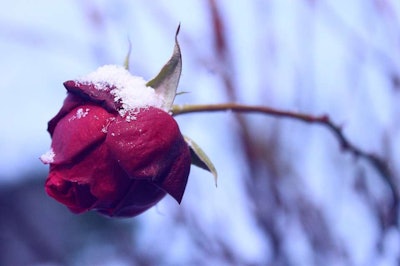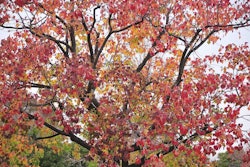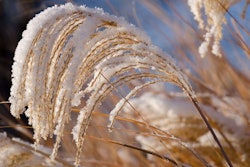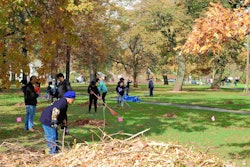 Photo: Pixabay
Photo: PixabayIt’s important to start preparing your customers’ yards for the upcoming winter as soon as possible. One plant in particular that could use a bit of attention is the rose.
While it’s possible that your customers may still be seeing some blooming action in their roses at this time of the year, it’s a good idea to go ahead and begin preparation for the impending cold weather.
Here we’ve laid out a few tips you can take back to your customers regarding winter care for roses.
Fertilization and clearing the beds
According to rose expert Chris VanCleave, it’s a good idea to stop fertilizing about six weeks prior to the first predicted frost in your area. This will help protect any tender new growth from becoming damaged by the freeze and frost.
Along with tapering off on fertilization, be sure to clear out the garden beds, especially any leaves that may be diseased. This will help keep problems at bay in the spring. If you don’t remove them now, it can cause fungal diseases.
While clearing debris out of the bed, take this time to remove roses that are no longer healthy. These plants tend to be very resilient, so don’t let your customers fret about the loss of one shrub or a few particular flowers.
VanCleave also recommends cutting any remaining blooms off, bringing them indoors and savoring them as the last blooms of the season.
Wind and dormant spray
Winds in the winter time can be damaging to not only the canes of roses but also the roots. Be sure that tall roses that have grown by 1/3 are trimmed back to prevent winter damage.
Once the temperatures begin to regularly fall below freezing, start applying a dormant spray. VanCleave suggests using a lime sulfur spray, as he says it will kill fungus on contact.
VanCleave recommends spraying it on the ground and on the entirety of the shrub.
“I have found that this one thing can help you start off the year with a disease-free rose bed,” VanCleave told the National Garden Bureau. “Also, never place diseased rose leaves in your compost bin. They should be removed altogether from your garden’s space.”
Mulching and forming hips
By the time fall and winter have arrived, it will be high time to mulch again, as the spring time mulch will be long gone. Since it will be getting colder, consider adding in an extra one-inch layer of mulch or more depending on how cold it gets in your area.
VanCleave recommends mounding the mulch around the roses to help hold in heat and moisture.
Also, don’t be hesitant to allow your customer’s roses to form hips. Not only do they provide a bit of color in the garden, they also are an excellent source of vitamin C for birds. The formation of hips also signals the rose to go dormant for the season.










